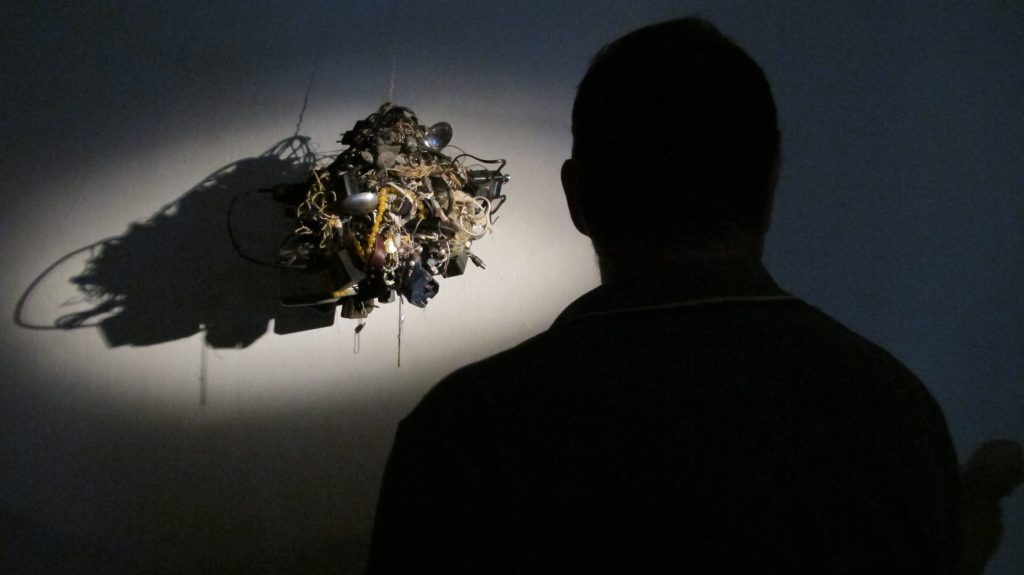
Would you be so kind to explain to us how Happy Trash Production works; how do you manage to maintain the continuity of the conceptual process; How do you manage to preserve the coherence of your own reactions and conclusions in your exhibitions − given that as authors you do not act in parallel with each other but are rather separated by different contextual circumstances since the group members live and work in different countries (Italy, Slovakia and Serbia)?
In our work we use different languages and manners of expression, ranging from painting, through installation, audio-visual works and performances up to the use of marginal languages and procedures in which we try to completely abandon the occupied and overcrowded spaces in contemporary art. In the process of work, we decide less on the principles that we would firmly adhere to, and follow the changed and imposed external influences and circumstances to a greater extent instead. Accordingly, in recent years, the focus of our work has shifted from ”creating” to ”redirecting” filtered content. This openness, incompleteness and communicativeness of the system we are trying to establish is in the function of the search and the need for authenticity, freshness in work and absence of manners.
In recent years, our work has become consciously less and less intentional, ambitious and self-branding, and it is becoming more and more simplified and self-marginalizing, moving along meanders and edges. Without a trace of wisdom or bitterness, our work turns to ”bad” art and non-art, ”thin”, ”slow”, ”superficial”, ”irrelevant”, ”soft” and ”bendable”, joyful alloys of ”ephemeral”, “accidental”, ”small” and ”foolish”. Hell and landfill (the idea, things, technology, feelings, desires, art …) of one man are a paradise for another.
The type of art that interests us and that we deal with (certainly at least us) points to the broader context of the culture in which that art is located. The cultural context points to an even broader context of the value system of the society to which that culture belongs. In our work, we try to modestly and wittily testify to the ways in which the criteria for forming an aesthetic and artistic ”experience” produce and destroy meanings in a cultural environment. Along the way, we are also trying to find our ”exit strategies”, namely, the possibility of accepting reality without rattle or elitism, as well as the inevitability of its change in the emptiness of a non-existent (or wrongly fused) wider system of culture.
All these attitudes are deeply rooted among the HTP members, so that the contextual circumstances of the different countries in which we live do not call into question the coherence of our reactions and conclusions.
How compatible is the theme of the exhibition 3E – Ecology, Ethics, Esthetics with your artistic interests and aesthetic-ethical views?
HTP’s artistic activity largely refers to complex phenomena in contemporary (not only) Serbian society, which we characterize as ecologically unscrupulous, illiterate when it comes to awareness about recycling, socially irresponsible, emotionally neglected, emphatically and esthetically crippled. Through the discourse of collecting and responsible attitude, we re-examine and revalue artistic and life value systems through research into the relationship between local and universal, meaningless and meaningful, beautiful and ugly, garbage and treasure, and develop a dialogical principle that recognizes everyone’s need to be happy.
